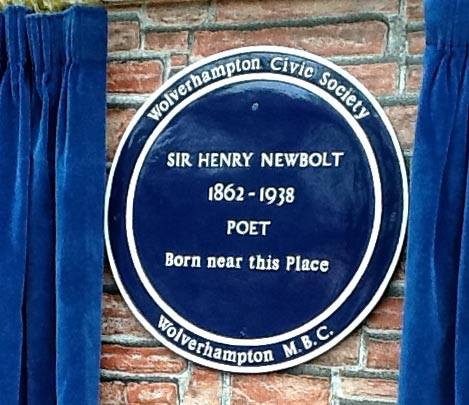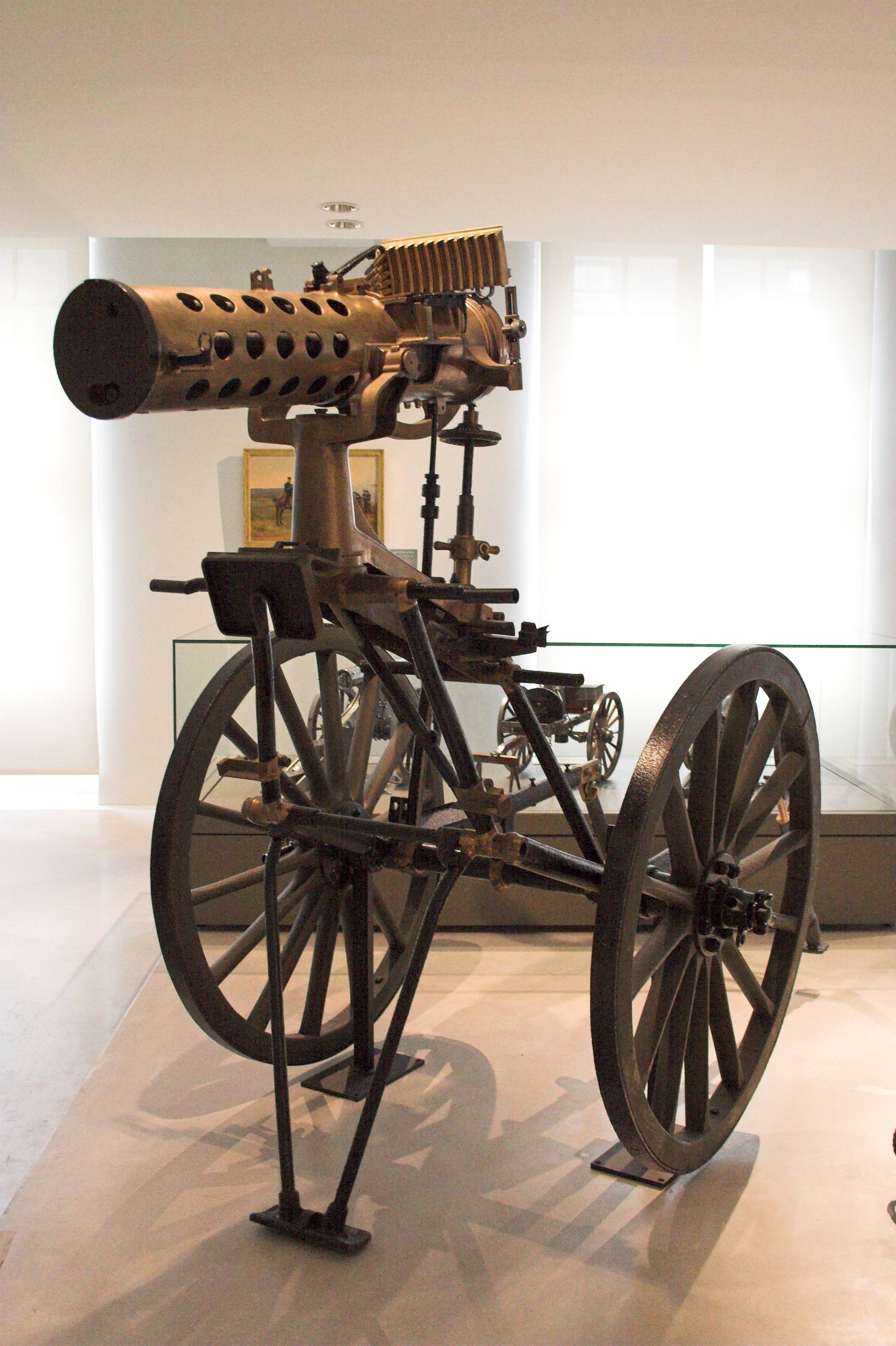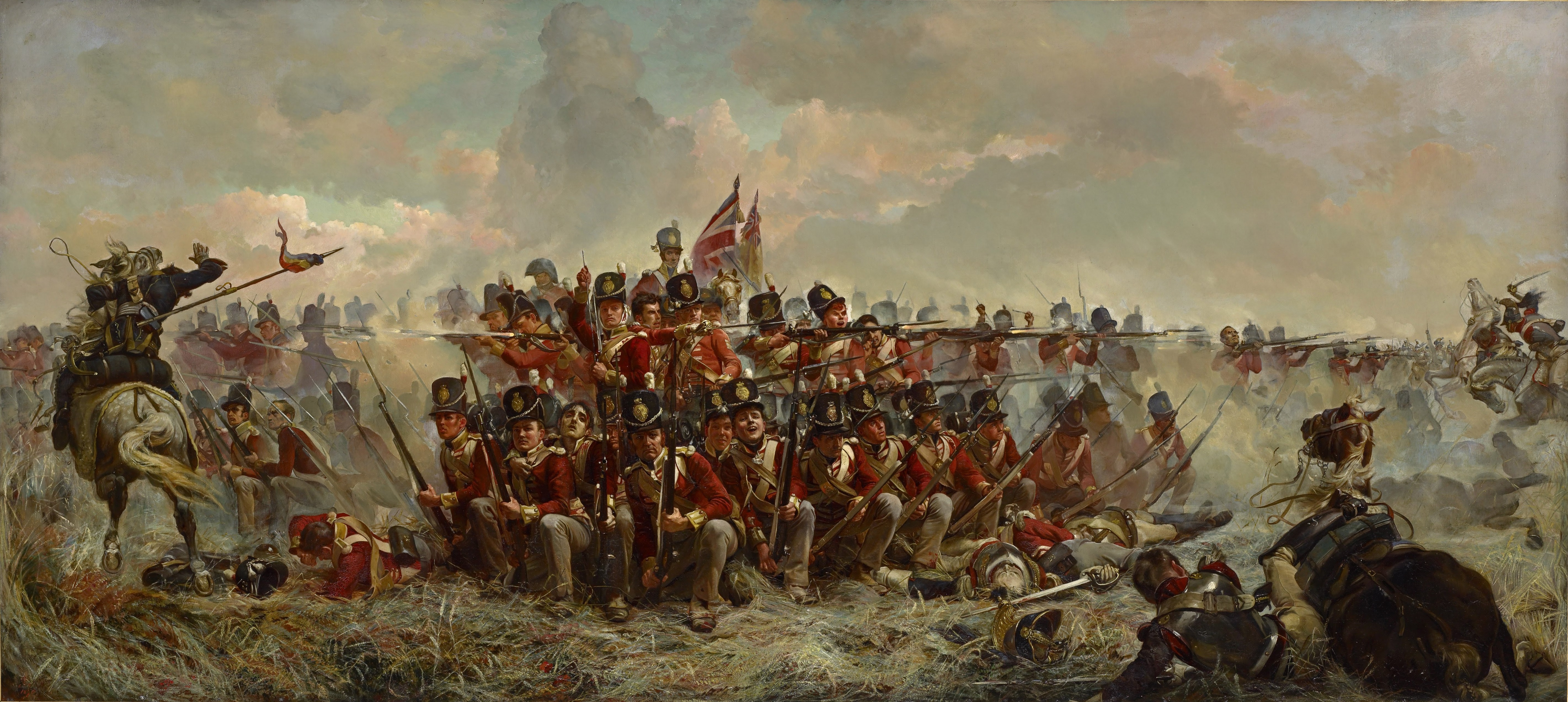|
Sir Henry Newbolt
Sir Henry John Newbolt, CH (6 June 1862 – 19 April 1938) was an English poet, novelist and historian. He also had a role as a government adviser with regard to the study of English in England. He is perhaps best remembered for his poems "Vitaï Lampada" and "Drake's Drum". Background Henry John Newbolt was born in Bilston, Wolverhampton (then in Staffordshire, but now in the West Midlands), son of the vicar of St Mary's Church, the Rev. Henry Francis Newbolt (1824–1866), and his second wife, Emily née Stubbs (1838–1921), the older brother of Sir Francis Newbolt. After his father's death, the family moved to Walsall, where Henry was educated. Education Newbolt attended Queen Mary's Grammar School, Walsall, and Caistor Grammar School, from which he gained a scholarship to Clifton College, where he was head of the school (1881) and edited the school magazine. His contemporaries there included John McTaggart, Arthur Quiller-Couch, Roger Fry, William Birdwood, Francis Young ... [...More Info...] [...Related Items...] OR: [Wikipedia] [Google] [Baidu] |
:Template:Infobox Writer/doc
Infobox writer may be used to summarize information about a person who is a writer/author (includes screenwriters). If the writer-specific fields here are not needed, consider using the more general ; other infoboxes there can be found in :People and person infobox templates. This template may also be used as a module (or sub-template) of ; see WikiProject Infoboxes/embed for guidance on such usage. Syntax The infobox may be added by pasting the template as shown below into an article. All fields are optional. Any unused parameter names can be left blank or omitted. Parameters Please remove any parameters from an article's infobox that are unlikely to be used. All parameters are optional. Unless otherwise specified, if a parameter has multiple values, they should be comma-separated using the template: : which produces: : , language= If any of the individual values contain commas already, add to use semi-colons as separators: : which produces: : , ps ... [...More Info...] [...Related Items...] OR: [Wikipedia] [Google] [Baidu] |
Corpus Christi College, Oxford
Corpus Christi College (formally, Corpus Christi College in the University of Oxford; informally abbreviated as Corpus or CCC) is one of the constituent colleges of the University of Oxford in the United Kingdom. Founded in 1517, it is the 12th oldest college in Oxford. The college, situated on Merton Street between Merton College and Christ Church, is one of the smallest in Oxford by student population, having around 250 undergraduates and 90 graduates. It is academic by Oxford standards, averaging in the top half of the university's informal ranking system, the Norrington Table, in recent years, and coming second in 2009–10. The college's role in the translation of the King James Bible is historically significant. The college is also noted for the pillar sundial in the main quadrangle, known as the Pelican Sundial, which was erected in 1581. Corpus achieved notability in more recent years by winning University Challenge on 9 May 2005 and once again on 23 February 2009, al ... [...More Info...] [...Related Items...] OR: [Wikipedia] [Google] [Baidu] |
Battle Of Abu Klea
The Battle of Abu Klea, or the Battle of Abu Tulayh took place between the dates of 16 and 18 January 1885, at Abu Klea, Sudan, between the British Desert Column and Mahdist forces encamped near Abu Klea. The Desert Column, a force of approximately 1,400 soldiers, started from Korti, Sudan on 30 December 1884; the Desert Column's mission, in a joint effort titled "The Gordon Relief Expedition", was to march across the Bayuda Desert to the aid of General Charles George Gordon at Khartoum, Sudan, who was besieged there by Mahdist forces. The place is generally known in British military records as Abu Klea, which arose as a contemporary British spelling of its Arabic name, Abu Tͅuleiħ'' (أَبُو طُلَيْح). Background The British forces consisted of 1,100 British of the Desert Column under Sir Herbert Stewart, against a Sudanese force of approximately 12,000 fighters. While the main British force (the River Column), led by General Sir Garnet Wolseley travelled by river ... [...More Info...] [...Related Items...] OR: [Wikipedia] [Google] [Baidu] |
Gatling
The Gatling gun is a rapid-firing multiple-barrel firearm invented in 1861 by Richard Jordan Gatling. It is an early machine gun and a forerunner of the modern electric motor-driven rotary cannon. The Gatling gun's operation centered on a cyclic multi-barrel design which facilitated cooling and synchronized the firing-reloading sequence. As the handwheel is cranked, the barrels rotate and each barrel sequentially loads a single cartridge from a top-mounted magazine, fires off the shot when it reaches a set position (usually at 4 o'clock), then ejects the spent casing out of the left side at the bottom, after which the barrel is empty and allowed to cool until rotated back to the top position and gravity-fed another new round. This configuration eliminated the need for a single reciprocating bolt design and allowed higher rates of fire to be achieved without the barrels overheating quickly. One of the best-known early rapid-fire firearms, the Gatling gun saw occasional use b ... [...More Info...] [...Related Items...] OR: [Wikipedia] [Google] [Baidu] |
Infantry Square
An infantry square, also known as a hollow square, was a historic combat formation in which an infantry unit formed in close order, usually when it was threatened with cavalry attack. As a traditional infantry unit generally formed a line to advance, more nimble cavalry could sweep around the end of the line and attack from the undefended rear or burst through the line, with much the same effect. By arranging the unit so that there was no undefended rear, a commander could organise an effective defense against a cavalry attack. With the development of modern firearms and the demise of cavalry, that formation is now considered obsolete. Early history The formation was described by Plutarch and used by the Ancient Romans; it was developed from an earlier circular formation. In particular, a large infantry square was used by the Roman legions at the Battle of Carrhae against Parthia, whose armies contained a large proportion of cavalry. That is not to be confused with the testudo for ... [...More Info...] [...Related Items...] OR: [Wikipedia] [Google] [Baidu] |
Clifton College Close Ground
Clifton College Close is a cricket venue in Clifton College, Bristol, which was used by Gloucestershire for 96 first-class matches between 1871 and 1932. It is first recorded as a cricket venue in 1860 and remains in use for local matches. The Close witnessed 13 of W. G. Grace's first-class hundreds for Gloucestershire in the County Championship. Grace's children attended the college. The Close featured in a well-known poem by O.C. Sir Henry Newbolt Sir Henry John Newbolt, CH (6 June 1862 – 19 April 1938) was an English poet, novelist and historian. He also had a role as a government adviser with regard to the study of English in England. He is perhaps best remembered for his poems "Vit ... – Vitaї Lampada ("There's a breathless hush in the Close to-night") References Cricket grounds in Bristol Sports venues completed in 1860 Clifton, Bristol {{England-cricket-ground-stub ... [...More Info...] [...Related Items...] OR: [Wikipedia] [Google] [Baidu] |
Lucretius
Titus Lucretius Carus ( , ; – ) was a Roman poet and philosopher. His only known work is the philosophical poem ''De rerum natura'', a didactic work about the tenets and philosophy of Epicureanism, and which usually is translated into English as ''On the Nature of Things''—and somewhat less often as ''On the Nature of the Universe''. Lucretius has been credited with originating the concept of the three-age system that was formalised in 1836 by C. J. Thomsen. Very little is known about Lucretius's life; the only certainty is that he was either a friend or client of Gaius Memmius, to whom the poem was addressed and dedicated. ''De rerum natura'' was a considerable influence on the Augustan poets, particularly Virgil (in his ''Aeneid'' and ''Georgics'', and to a lesser extent on the ''Eclogues'') and Horace. The work was almost lost during the Middle Ages, but was rediscovered in 1417 in a monastery in Germany by Poggio Bracciolini and it played an important role both ... [...More Info...] [...Related Items...] OR: [Wikipedia] [Google] [Baidu] |
Newcastle Publishing Company
The Newcastle Publishing Company was a Southern California-based small trade paperback publisher founded by bookstore owner Al Saunders, active from July 1971 through October 1992, under the editorial direction of Robert Reginald and Douglas Menville, formerly the editors of the speculative fiction magazine ''Forgotten Fantasy''. Saunders died in 1997, and Newcastle was later acquired by Career Press. The company originally reprinted out-of-print metaphysical books that had reverted to the public domain, quickly branching out into fiction and, in 1980, original works. It continued to specialize primarily in New Age and other fringe materials, including psychic powers, fortune-telling, tarot reading, numerology, and handwriting analysis. It also published self-help books. In fiction Newcastle is best remembered for its ''Newcastle Forgotten Fantasy Library'', which reissued two dozen neglected classics of fantasy literature between 1973 and 1980, including works by William Morris ... [...More Info...] [...Related Items...] OR: [Wikipedia] [Google] [Baidu] |
Fairy
A fairy (also fay, fae, fey, fair folk, or faerie) is a type of mythical being or legendary creature found in the folklore of multiple European cultures (including Celtic, Slavic, Germanic, English, and French folklore), a form of spirit, often described as metaphysical, supernatural, or preternatural. Myths and stories about fairies do not have a single origin, but are rather a collection of folk beliefs from disparate sources. Various folk theories about the origins of fairies include casting them as either demoted angels or demons in a Christian tradition, as deities in Pagan belief systems, as spirits of the dead, as prehistoric precursors to humans, or as spirits of nature. The label of ''fairy'' has at times applied only to specific magical creatures with human appearance, magical powers, and a penchant for trickery. At other times it has been used to describe any magical creature, such as goblins and gnomes. ''Fairy'' has at times been used as an adjective, wi ... [...More Info...] [...Related Items...] OR: [Wikipedia] [Google] [Baidu] |
Aladore
''Aladore'' is a classic allegorical fantasy novel written by English poet Henry Newbolt. It was first published in hardcover by William Blackwood and Sons, Edinburgh, in 1914. An American edition from E. P. Dutton & Company, followed in 1915. The first paperback edition was issued by the Newcastle Publishing Company as the fifth volume of the Newcastle Forgotten Fantasy Library in September, 1975; this edition was reissued by Borgo Press in 1980. The book has been translated into German. Plot summary The story takes the form of a quest exploring in allegorical fashion the qualities of youth, duty, self and heritage. Ywain, a knight bored with his administrative duties, abandons his estate to his younger brother and goes on a pilgrimage to seek his heart's desire. Following a will-o'-the-wisp resembling a child, he is led to a hermit dwelling in the wilderness, under whose instruction he lives for a time. Afterwards his quest takes him to the city of Paladore (also the subject of ... [...More Info...] [...Related Items...] OR: [Wikipedia] [Google] [Baidu] |
Victoria Road, Kensington
Victoria Road is a street in Kensington, London, that in 2015 was considered the most expensive street in the United Kingdom. The street runs north to south from Kensington Road, Kensington High Street in close proximity to Kensington Palace and the Royal Albert Hall. Victoria Road actually runs from Kensington Road and not from Kensington High Street as cited previously. There are 64 properties on the street including the Embassy of Vietnam.The Most Expensive Street at The Guardian Money Retrieved 11 December 2015 History The street was originally called Love Lane and the white stucco-fronted houses date from the 1840s. In April 2012, it was named the "most expensive in UK", with residents ...[...More Info...] [...Related Items...] OR: [Wikipedia] [Google] [Baidu] |





